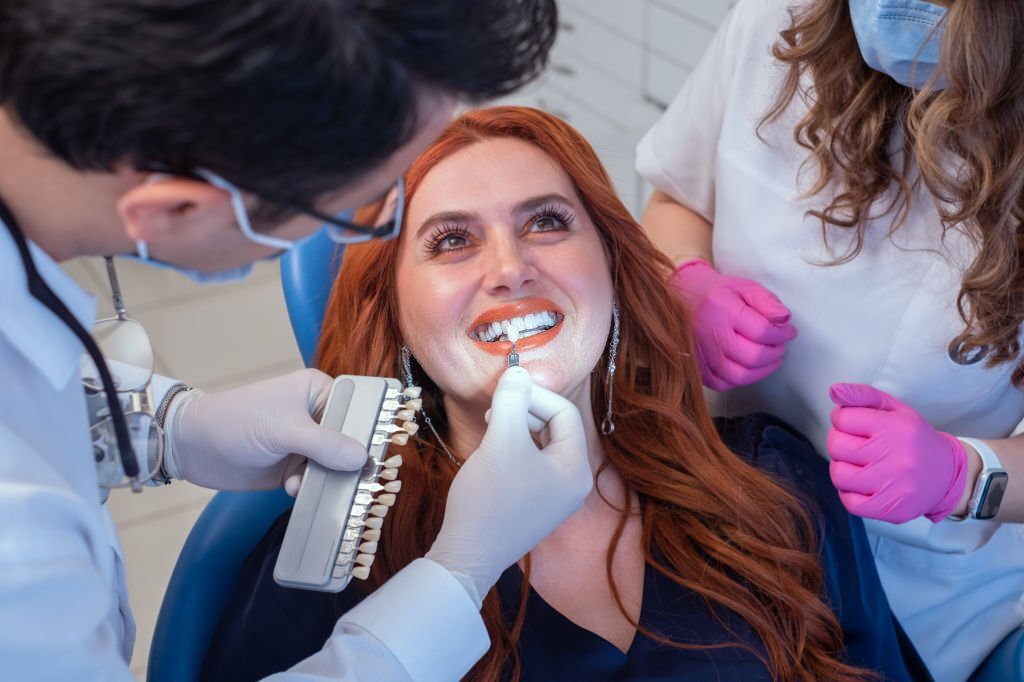Introduction
The color of our teeth plays a significant role in the aesthetics of our smile. While some people are naturally blessed with bright, white teeth, others may struggle with teeth that appear more yellow or stained. The natural color of our teeth is influenced by various factors, including genetics. Our genetic makeup can affect the inherent color of our teeth and their potential for teeth whitening treatments. In this blog, we will explore the role of genetics in teeth color and whitening potential, understand how genetic factors contribute to tooth coloration, and discuss the implications for teeth whitening procedures.

The Genetics of Tooth Color
The color of our teeth is determined by the combination of genetic factors inherited from our parents. These genetic factors influence the amount and density of certain substances present in the teeth, which, in turn, affects their coloration. The main components that contribute to tooth color are:
Dentin:
Dentin is the hard tissue beneath the tooth enamel. It contains tubules and reflects light differently from enamel, giving teeth their natural color. Dentin can vary in color, ranging from yellow to gray, and its thickness affects the overall color of the tooth.
Enamel:
Enamel is the outermost layer of the tooth and is translucent. While enamel itself is white, its translucency allows the color of the dentin to show through, influencing the overall appearance of the teeth.
Pigments and Chromophores:
Pigments and chromophores are natural color molecules present in the dentin and enamel. The presence and density of these molecules can affect tooth color.
Thickness and Smoothness:
The thickness and smoothness of enamel also impact the reflection of light, influencing the perceived whiteness of the teeth.
Genetic Variations in Tooth Color
Genetic variations can lead to different tooth colors among individuals. Some common genetic factors that influence tooth color include:
Dentin Color:
The inherent color of dentin can vary among individuals due to genetic differences. Dentin with a yellow or gray tint may result in teeth that appear more yellowish or dull in color.
Enamel Thickness and Transparency:
Genetic variations can affect the thickness and transparency of enamel, which, in turn, influence how much of the dentin’s color is visible.
Pigment and Chromophore Density:
Genetic differences can affect the density and distribution of pigments and chromophores in the dentin and enamel, leading to variations in tooth color.
Tooth Structure:
Genetic factors can influence the overall structure and shape of teeth, which may impact their coloration and appearance.
The Role of Genetics in Teeth Whitening Potential
When considering teeth whitening procedures, it is essential to recognize that genetics also play a role in the whitening potential of teeth. The effectiveness of teeth whitening treatments can vary among individuals due to their genetic predisposition. Here are some factors related to genetics that affect teeth whitening potential:
Dentin Color:
The natural color of dentin can influence the final outcome of teeth whitening treatments. Individuals with thicker or darker dentin may find it more challenging to achieve a whiter shade.
Tooth Structure:
The overall structure of teeth, including enamel thickness and smoothness, can impact the ability of teeth to respond to teeth whitening treatments.
Stain Resistance:
Some individuals may have teeth that are naturally more resistant to staining due to their genetic makeup, leading to more durable teeth whitening results.
Sensitivity: Genetic factors can also influence tooth sensitivity, which may affect the tolerance and frequency of teeth whitening treatments.
Age and Aging Effects:
As we age, our teeth naturally darken due to changes in the dentin and enamel. Genetics can influence how teeth age and respond to whitening treatments over time.
Implications for Teeth Whitening Procedures
The role of genetics in teeth color and whitening potential has important implications for teeth whitening procedures. While teeth whitening treatments can significantly improve tooth color for most individuals, the results may vary based on genetic factors. It is essential to manage expectations and understand that achieving a specific shade of white may not be possible for everyone.
For individuals with naturally darker dentin or other genetic factors that affect tooth color, achieving a brighter shade may require more extensive or frequent teeth whitening treatments. Dental professionals can assess an individual’s unique dental characteristics, including genetic factors, and recommend the most suitable teeth whitening approach to achieve the best possible results.
Furthermore, for those with more challenging teeth whitening potential, at-home professional teeth whitening kits prescribed by dental professionals may offer more gradual and controlled whitening. These kits allow individuals to customize their treatment schedule and maintain their results over time.
Conclusion
Genetics play a crucial role in determining the natural color of our teeth and their potential for teeth whitening treatments. Various genetic factors, including dentin color, enamel thickness, pigment density, and tooth structure, influence tooth coloration. These genetic variations impact the effectiveness and outcome of teeth whitening procedures, with some individuals experiencing more significant improvements than others.
While teeth whitening treatments can provide impressive results for most individuals, it is essential to recognize the influence of genetics and manage expectations accordingly. Dental professionals can assess an individual’s dental characteristics and provide personalized recommendations to achieve the best possible teeth whitening results.
Remember that a bright, white smile is not the only indicator of oral health and beauty. Dental professionals can help you embrace the unique beauty of your natural smile and recommend appropriate teeth whitening options to enhance your confidence and overall dental aesthetics.


